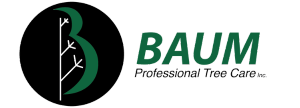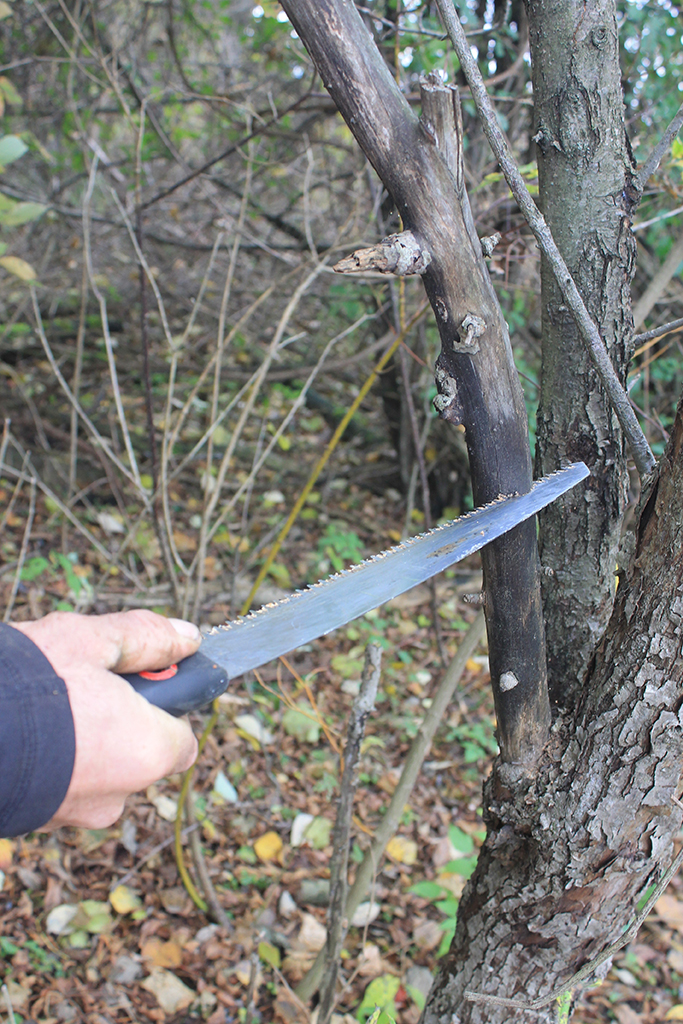
The question about “when to prune a tree” really depends upon why you need to prune in the first place. Light pruning and the removal of dead wood can be done any time of the year, but for many other purposes, seasonality plays a roll.
Since we are heading into the colder months, we wanted to provide some guidelines on dormant pruning (see below for explanation). To find our other ways to prepare your trees for colder temperatures check out our blog on Winter Tree Work

Fall Tree Pruning
Pruning during dormancy is a common practice. This usually means after the leaves have fallen and before the trees leaf out in Spring. Pruning for structure and form can be easier when the leaves are off the trees and the branches can be seen clearly.
Pruning during dormancy results in a vigorous burst of new growth in the Spring and should be used if that is the desired effect. This is especially true for fast growing species like Silver Maple, Linden, Dogwood or Willow.
Certain Fall blooming species should be pruned in the fall after bloom to ensure plenty of blooms the next year.
Winter
Pruning during the winter months can help prevent the spread of disease. An example of species that should only be pruned in the winter is Oak. Oak Wilt has arrived in Ontario and this is a huge concern. Oak Wilt is a fungal disease that can quickly kill an Oak tree. It spreads by beetles and through the movement of firewood and other wood products. Pruning Oaks in the winter helps to prevent the spread. Depending on the temperature Oak pruning should be done between November-March.
In the dead of winter it is best to wait until the coldest weather has passed as new cuts can become dried out during a bitterly cold spell. Some species, such as Maple, Walnuts and Birches, may “bleed”—when the sap begins to flow. This is not harmful and will cease when the tree puts out leaves. If a tree is already stressed from drought or disease, or was not vigorous the previous year it would be better to wait until the tree is just about to leaf out to do any major pruning.
Spring

Fruit trees are always pruned in the Spring to encourage new growth and maintain shape. Many of the reasons you may choose to prune in the Fall are good reasons to prune in the Spring. Some Spring blooming species may prefer to be pruned after they have the blooms have dropped. These include: Lilac, Magnolia, Forsythia or Redbud.
Summer
Removing dead wood in the summer when the leafless branches are easily spotted does make the job easier. Various other types of pruning can be carried out in summer depending on the species in question. We typically prune Cedar hedges in Summer or Fall to avoid browning foliage that occurs when pruned in Spring.
 Storm Damage
Storm Damage
After a tree has been damaged in a storm, the best time to prune it is as soon as possible. If hazards are present, they should be removed immediately. If the tree is not mortally wounded and can be retained then it’s important to restore the crown so that it does not fail again. Exposed branches on storm damaged trees can act like dominoes if not addressed.
The most important factor when pruning
It is SO important to know how to prune a tree properly. Improper pruning can cause a lot more harm than good. Safety is also key and attempting to prune a tall tree – the use of a ladder can end in serious consequences such as falls, slips and long term injury or worse. When in doubt, call the professionals at Baum Tree Care to ensure the safety of your trees and yourself!




You must be logged in to post a comment.